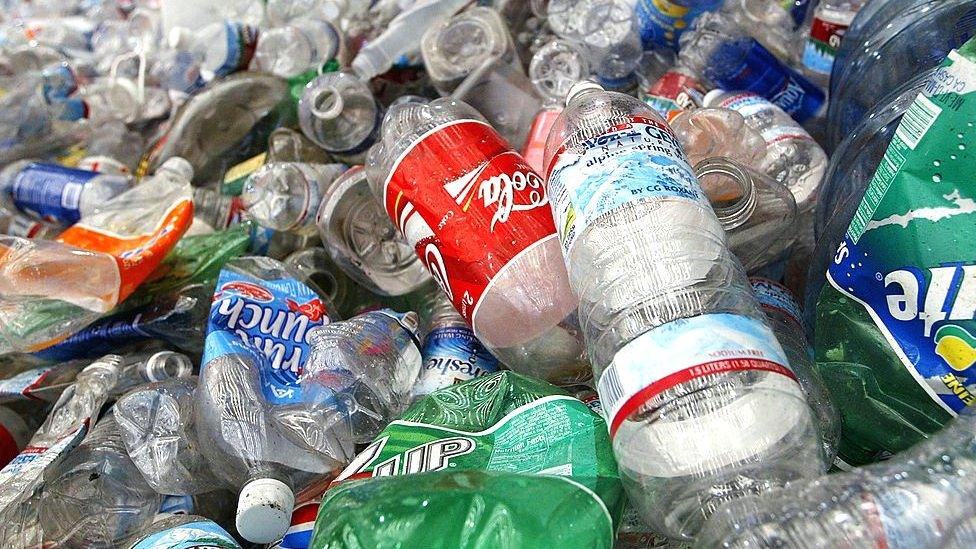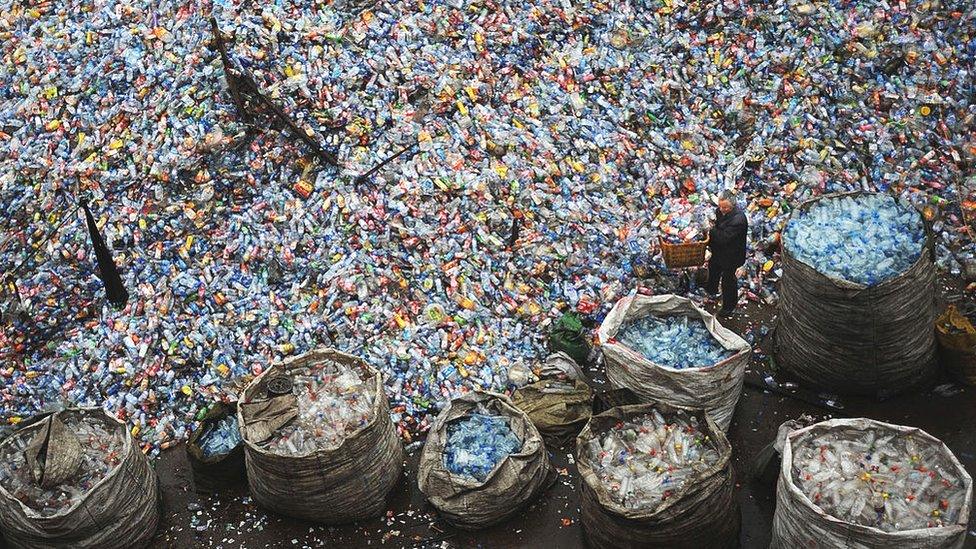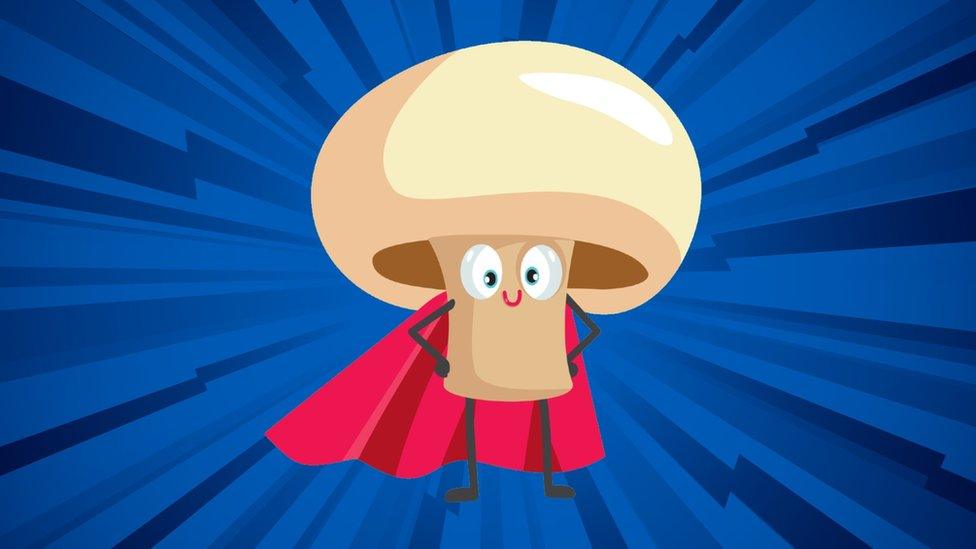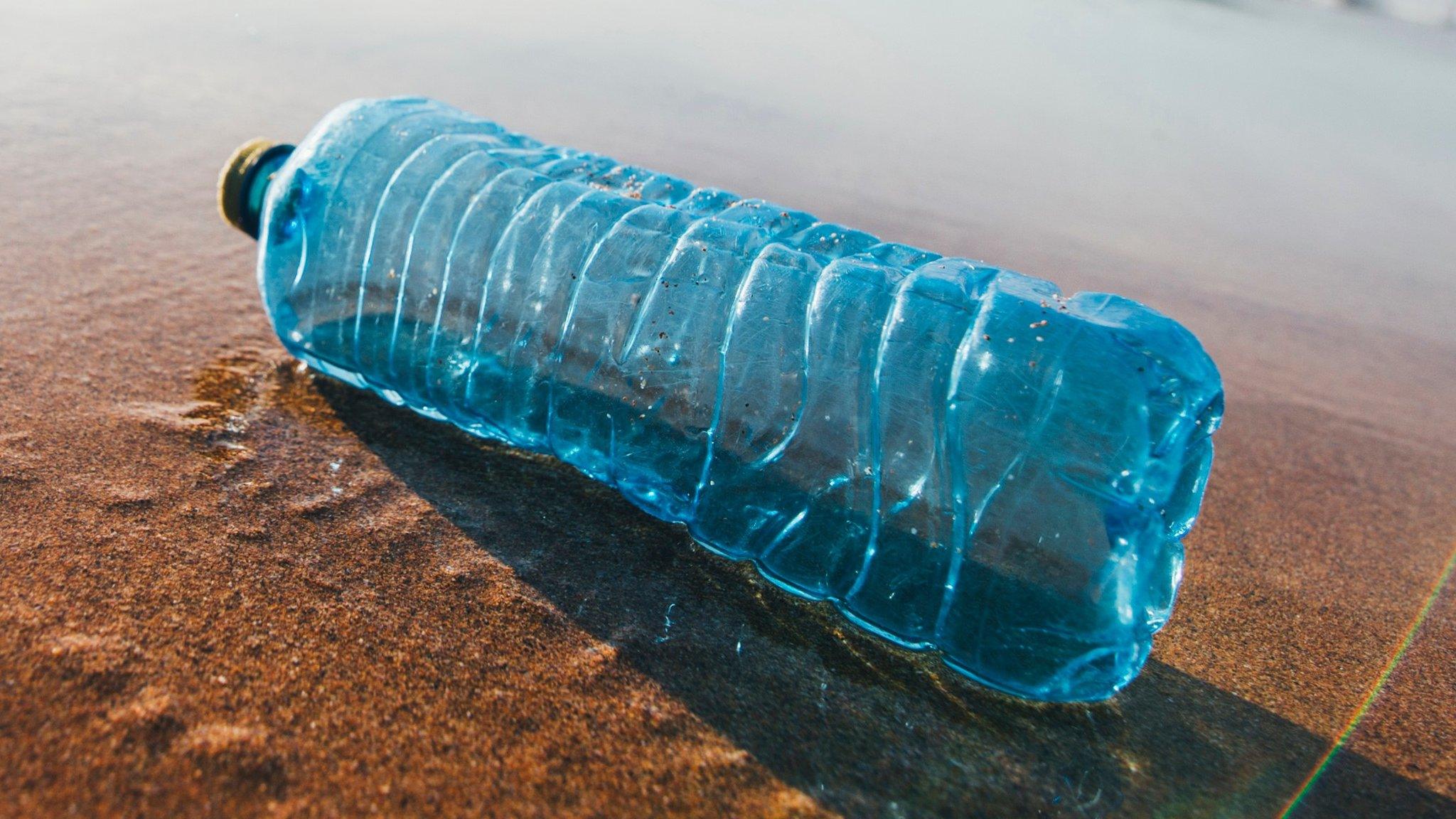Plastic-eating microbes that work in colder temperatures discovered
- Published
- comments

Scientists have discovered a group of microbes that can 'eat' plastic at low temperatures.
A team of researchers from the Swiss Federal Institute WSL were investigating microbes in Greenland, Svalbard and Switzerland when they found that some could break down plastic at temperatures of 15 degrees Celsius.
Previously scientists have only ever found microbes doing this at high temperatures - around 30C.
The scientists think this research is very valuable, as it could have a huge impact on plastic recycling in the future.
How did scientists find the plastic-eating microbes?

As part of the research, Dr Joel Rüthi from WSL and their team took samples of 34 types of microbes - 19 types of bacteria and 15 types of fungi - which were found growing on plastic that had been kept in the ground for one year in Greenland, Svalbard and Switzerland.
They then let these tiny organisms grow in darkness at temperatures of 15C in a laboratory before seeing if they would be able to break down plastic.
The plastics they tested included: Polyethylene (PE) - which is non-biodegradable - polyester-polyurethane (PUR) - which is biodegradable - as well as two other biodegradable plastic mixtures, polybutylene adipate terephthalate (PBAT) and polylactic acid (PLA).
Biodegradable - means that an item can be broken down into smaller pieces by bacteria, fungi or microbes to be reabsorbed into the environment. This can take anywhere between a few months, to decades!
Non-biodegradable - Means something cannot be broken down.
What did the results show?
None of the microbes were able to break down the Polyethylene, even after 126 days of growing time on the plastic.
However, 19 of the microbes (more than half tested) were able to break down polyester-polyurethane and 17 were able to break down the plastic mixtures of polybutylene adipate terephthalate (PBAT) and polylactic acid (PLA).
The scientists also found that the best performing microbes were two types of fungi from the the genera neodevriesia and lachnellula family, that haven't been named yet, which could 'eat' all of the tested plastics except PE.
The reason why microbes like bacteria and fungi can break down some types of plastic, is because the way plastics are built is similar to how the cells in plants are laid out, meaning the microbes recognise it as something familiar.
Why is this good news for recycling?

Fantastic fungi could help break down plastic
We already know of some microorganisms that can breakdown types of plastic, however, they can only usually do so at high temperatures - above 30C.
This would cost a lot of money in heating, and would likely have to use fossil fuels to keep the temperature high - meaning it would be expensive and not very environmentally friendly to recycle in this way.
However, the scientists' new discovery might mean a process much more energy-efficient way to break down plastics.
Currently the scientists have only tested the process at one temperature, so they said more research would need to be done to learn more and discover the best microbes and temperature.
- Published7 March 2023

- Published17 March 2020

